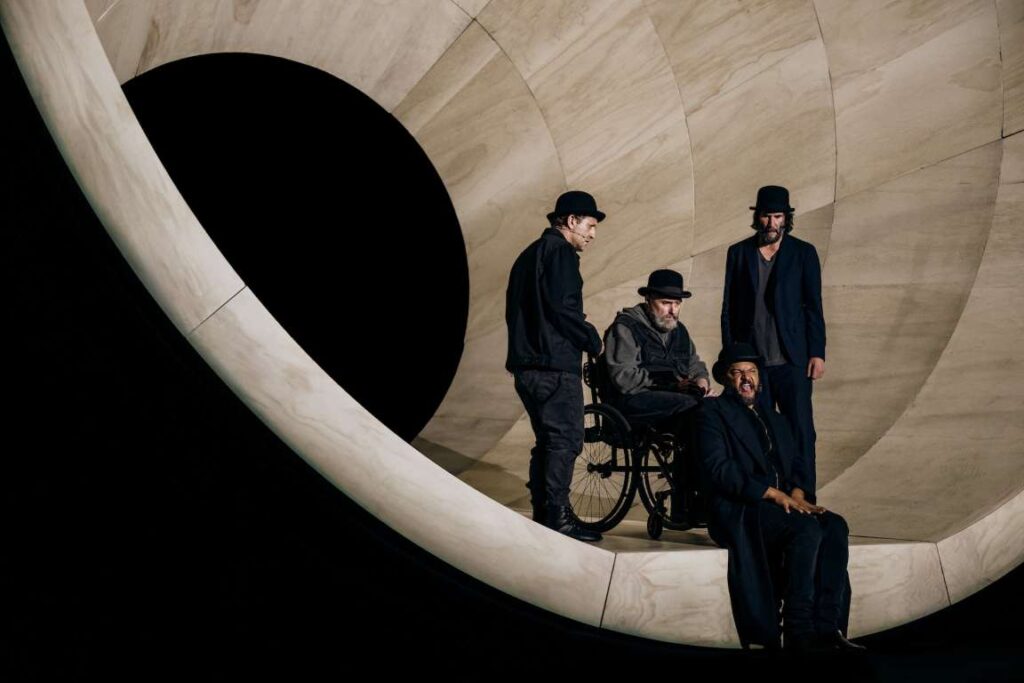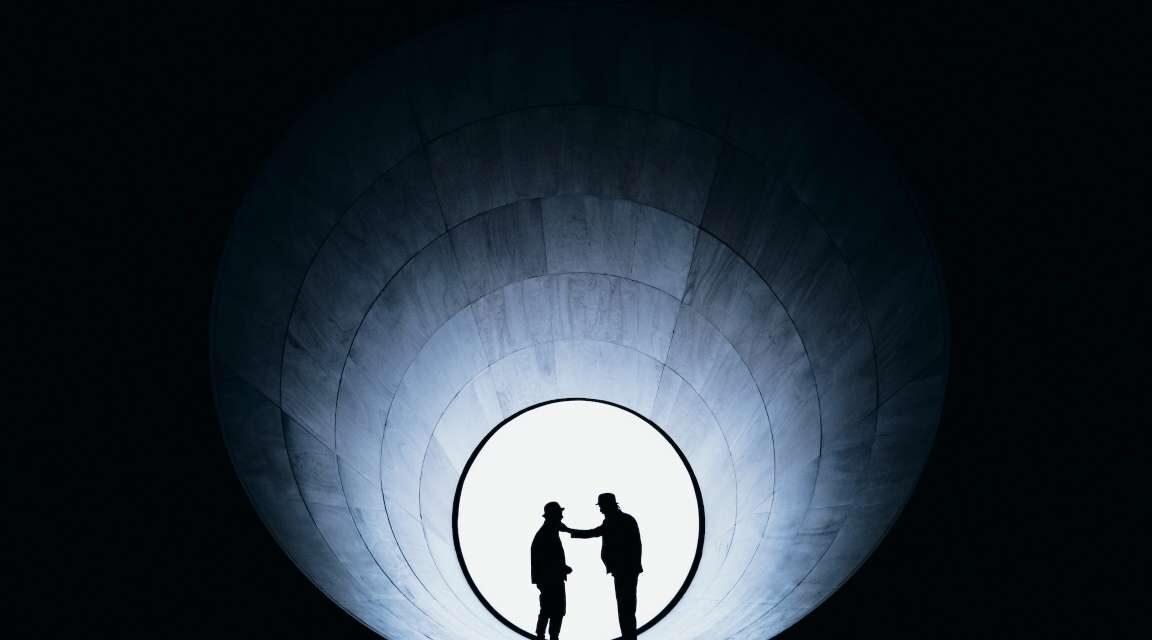Review by Carol Rocamora…
Director Jamie Lloyd gives us a daring version of Beckett’s classic.
What??? No tree????!!!!
Jamie Lloyd is at it again. This bold British director is stripping a classic of its essential symbolic element, letting his radical minimalism get the better of the play. He’s done it before: no seagull in his recent production of The Seagull; no protruding nose in his revival of Cyrano de Bergerac either. This time, his target is Samuel Beckett’s Waiting for Godot, one of the greatest plays of the twentieth century.
OK, so maybe I’m one of those irritating traditionalists. But don’t you think that Samuel Beckett (like Lloyd, a radical minimalist in his own time) specified a tree – the only scenic element in his original – for a reason? It has no leaves in Act I; it had a few trees in Act II. In a play with no other scenery, isn’t Beckett trying to say something about time? And then there’s the road, also specified in his original, that is also absent in this production. Why is Lloyd replacing it with a tunnel? What is he trying to prove?

All right, we’ll save that question for later. To be fair, let’s deal first with what Lloyd has preserved in Beckett’s 1953 masterpiece. He’s kept the script and its two main characters – Vladimir and Estragon (aka Didi and Gogo, played by Alex Winter and Keanu Reeves respectively), two tramps whose only action in this two-hour play is to stand by a roadside, waiting for someone named Godot (who never comes). He’s kept the cameo roles of the two strange passers-by – Pozzo (Brandon J. Dirden) and his servant Lucky (Michael Patrick Thornton). And he’s kept that mysterious appearance at the end of each act of the angelic little boy (Eric Williams), emissary of Godot, promising that his master will come tomorrow.
The meaning of this remarkable play in which “nothing happens, twice” (as one of its first critics described it) has been taught to us in our schooldays – as an existential vision of the human condition, of the passage of time, and of waiting for salvation that never comes, etc. But rather than leaving Beckett’s play alone and letting it speak for itself, Lloyd and his set designer (Soutra Gilmour) have added a major scenic element – an enormous tunnel that dominates the entire stage, with which the cast must contend. So instead of waiting, the actors’ primary action is the constant climbing up, slipping, and sliding down the sides of this tunnel. It’s entertaining, it’s diverting, but it’s not what Beckett wrote.
There’s a second element that Lloyd has added that was not in Beckett’s original, and that is fear. The scenes where Pozzo and Lucky enter Didi and Gogo’s space are filled with the threat of violence (on the part of Pozzo), and the image of Pozzo together with Lucky seated in a wheelchair wearing a muzzle is downright disturbing. Indeed, the sight of this foursome in the giant gaping hole to the tunnel that fills the stage is both overpowering and frightening. Again, it’s a stunning image, but it’s Lloyd’s, not Beckett’s.
Lloyd’s tendency to shock and sensationalize dominates this Waiting for Godot, to the point that – with Gilmour’s highly theatrical set, lighting (Jon Clark) and sound effects (Ben & Max Ringham) – it resembles his recent production of Sunset Boulevard. Sensationalism, however, is not an element that belongs in Beckett’s masterpiece.
What saves this production in the end and keeps it faithful to the original is the touching duet of Winter and Reaves. Beckett imagined the play as a tragicomedy – two hobos in bowler hats performing meaningless vaudeville routines by the roadside, while waiting for salvation that will never come. They follow in a long line of famous pairs playing these immortal roles (my favorites were Steve Martin and Robin Williams at Lincoln Center in 1988. More recently, there were Ian McKellen and Patrick Stewart, Bill Irwin and Nathan Lane, and Michael Shannon and Paul Sparks.)
What Winters and Reaves bring to this Godot is a genuine, longtime relationship – as actors in the TV series “Bill and Ted’s Excellent Adventure” (in the 1980s), and as friends ever since. The love and loyalty they have for each other – as characters and as actors – is heartfelt, and the ease and pleasure they bring to their duet performance is palpable. What remains in my memory from this production is not the sensational staging and lighting, but rather the times when Didi and Gogo simply give each other a warm, loving hug.
After all this is a play about humanity and the human condition. As Beckett says in Act II, in a line that resonates so deeply today: “All mankind is us, whether we like it or not.”
Waiting for Godot, by Samuel Beckett, directed by Jamie Lloyd, on Broadway at the Hudson Theater, now through January 4.


